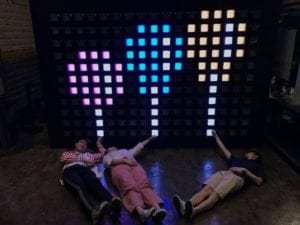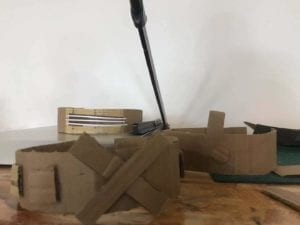Definition of Interaction:
Interaction is a dynamic conversation between two actors or more. Not similar to a common performance that the audience just simply receive information from the performer, interaction requires the participation of both sides. According to The Art of Interactive Design by Crawford, the procedure of the conversation can be divided into three parts: input, process and output—one actor speaks something, then the other listens, thinks and speaks something as a response cyclically.
During my process of learning, I find the first project I research on is not so fit with the concept of “interaction”. It is Artists Show Us How to Make Outrageous Costumes for $100 By Kara Weisenstein. In the project, artists make various Halloween costumes for only 100 dollars. Although the artworks are magnificent, I think this project is an exhibition instead of interaction. The viewer can get a chance to admire the beautiful costumes, but they cannot do anything with it. There doesn’t exist the three necessary factors of “input, process and output”, and viewers are unable to establish a certain sort of conversation.

The second project that aligns with my definition is called Click Canvas. Click Canvas is a smart led that the audience can inject something meaningful to the art pieces by clicking the buttons to change their colors and leave a piece of their creativity at the gallery before they leave. “Interaction” is embodied that people give out instructions by clicking the different buttons, and after a series of data processing, the canvas give out the output in the way of color changing. The meaningful painting created by the audience can be then shown to other audiences, and they can go on creating something on the canvas. Thus, there established a conversation between different audiences and the canvas, bringing about fantastic collision of inspirations and creativity. That’s the reason why I think this project aligns better to that definition.

Group Project
Our group’s idea of Skype 2.0 is inspired by the popular VR technology. Skype 2.0 is a communication software connected with a VR headband. After people put on the headband and hook it up to the computer, their body will fall asleep in the real world and their minds will be guided into a virtual chatroom where users can have a nice chat as if they were really close even though they are truly far away from each other. The chatroom includes various functions. Users’ personal images and settings of the chatroom can be freely changed, smells from reality can be felt, and even someone can be muted as other users wish.
We say Skype 2.0 is interactive because it involves at least two actors with a procedure of input, process and output. For the conversation between users and the device, users put on their headbands and transmit their minds into the machine as an input. Then, the device process these data and carry out the instructions into the virtual chatroom, showing lifelike images and sounds to the users as an output, which makes it possible for users to have a feeling that they are really talking to each other. For the conversation between users themselves, it is obvious that there exists a conversation in the chatroom where people listen, think and speak cyclically. That’s why we think Skype 2.0 fit in with the criteria of “interaction”.
 Headbands of Skype 2.0
Headbands of Skype 2.0
References:
https://www.vice.com/en_us/article/kz3zme/artists-show-us-how-to-make-outrageous-costumes-for-dollar100
https://create.arduino.cc/projecthub/natthakit-kim-kang/click-canvas-an-interactive-wall-04332c?ref=tag&ref_id=interactive&offset=0
Crawford, “What Exactly is Interactivity,” The Art of Interactive Design, pp. 1-5.